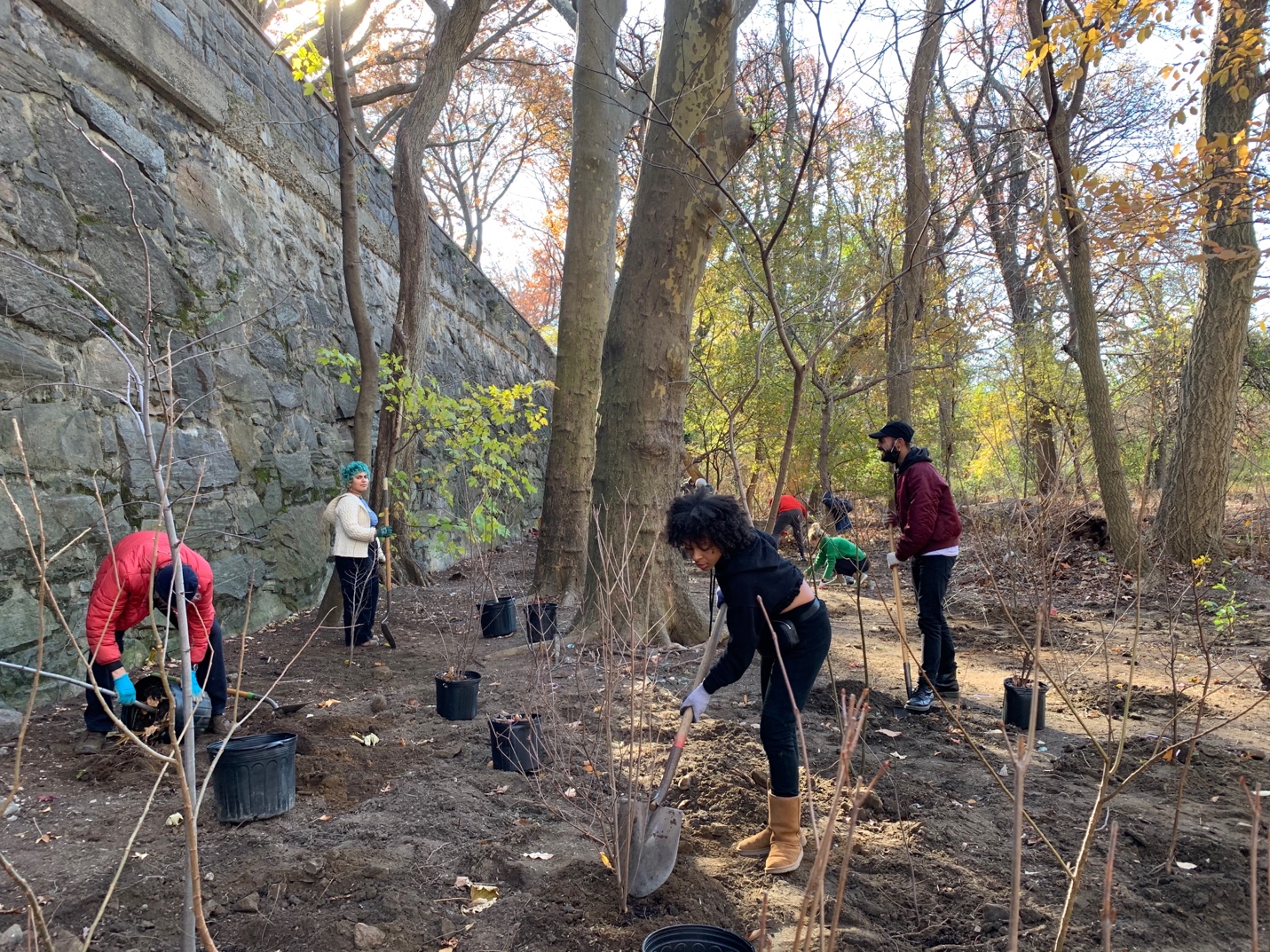
Since the death of his wife three months ago, Joe Sherman said he has found comfort in being around other people. On Dec. 1, Sherman was shoveling dirt and planting young trees at Rosewood Playground in Bronx Park in Soundview.
A retired Bronx resident of 31 years, Sherman said he feels a responsibility to protect the earth for his grandchildren. “I want them to have a world to live in,” he said.
Sherman was one of over a dozen volunteers and members of The Bronx River Alliance who spent their afternoon planting more than 150 trees beside the playground.
Native trees such as Black Willows and London Plane Trees were among the selected species. Jennifer Seda, a conservation crew member at The Bronx River Alliance, said the native plants will fight off invasive species like knotweed or porcelain berry by taking up root real estate in the soil.
Seda used to live by the Cross Bronx Expressway and said the air pollution in the South Bronx could be mitigated by planting more trees. The leaves can filter out pollutants such as greenhouse gas emissions year-round but are more active during the spring, which is their growing season.
Nathan Hunter, who manages The Bronx River Foodway, said tree canopies can drop temperatures by 15 to 20 points. “Recognizing the histories that exist in the Bronx, and the marginalization of Black and brown people here in this borough, the more we can be doing to address health disparities, in simple ways, like adding trees, we should be acting in that way,” Hunter said.
According to The Nature Conservancy in New York, The Bronx gained 588 acres of tree canopy from 2010 to 2017. The nonprofit organization’s State of the Urban Forest report writes that Community Boards 1 and 2 experienced canopy growth that is likely from tree-planting efforts.
The Bronx, in fact, saw some of the largest increases in tree canopy in the borough’s parkland, the report said. Pelham Bay Park had a 49-acre increase and Van Cortlandt Park had a 33-acre increase.

At the Bronx Park tree planting, small buckets filled with rooted saplings, gloves and shovels were distributed among volunteers and workers. Holes that reached a depth of 2-3 feet were filled with the trees and later packed down with soil and fallen leaves.
Caring for the earth comes naturally for Brooklyn resident Andrea Estrada. Having just begun training with Farm School NYC, Estrada said she hopes to put her skills into practice in the future.
“My current dream is to become an urban farmer and find a way to really explore the intersection of urban farming and herbalism,” Estrada said, noting that her passion for the environment is entangled with social justice.
Estrada said she hopes her future with farming will help Black, Indigenous, queer and working-class people reclaim a connection with their land.
In about seven years, Jennifer Seda said the newly planted trees should grow to meet their neighbors, forming a canopy to shade the playground.

